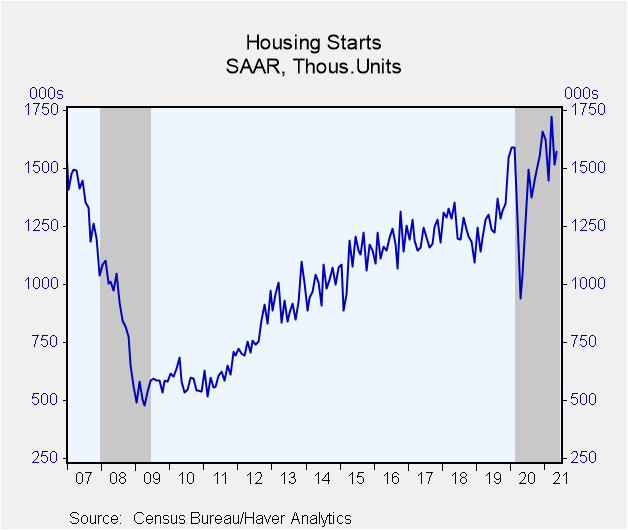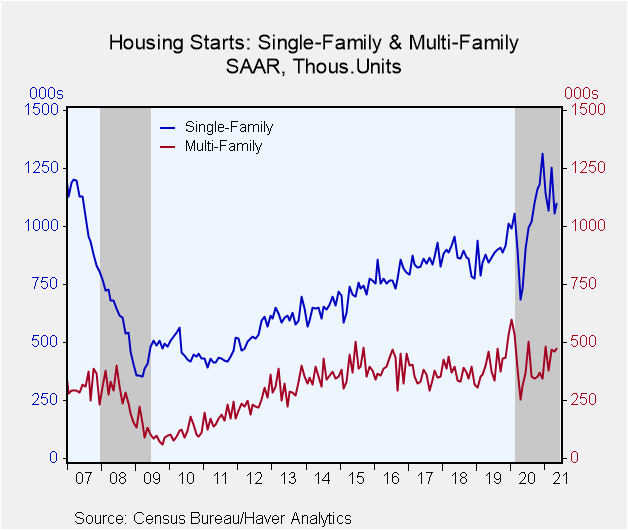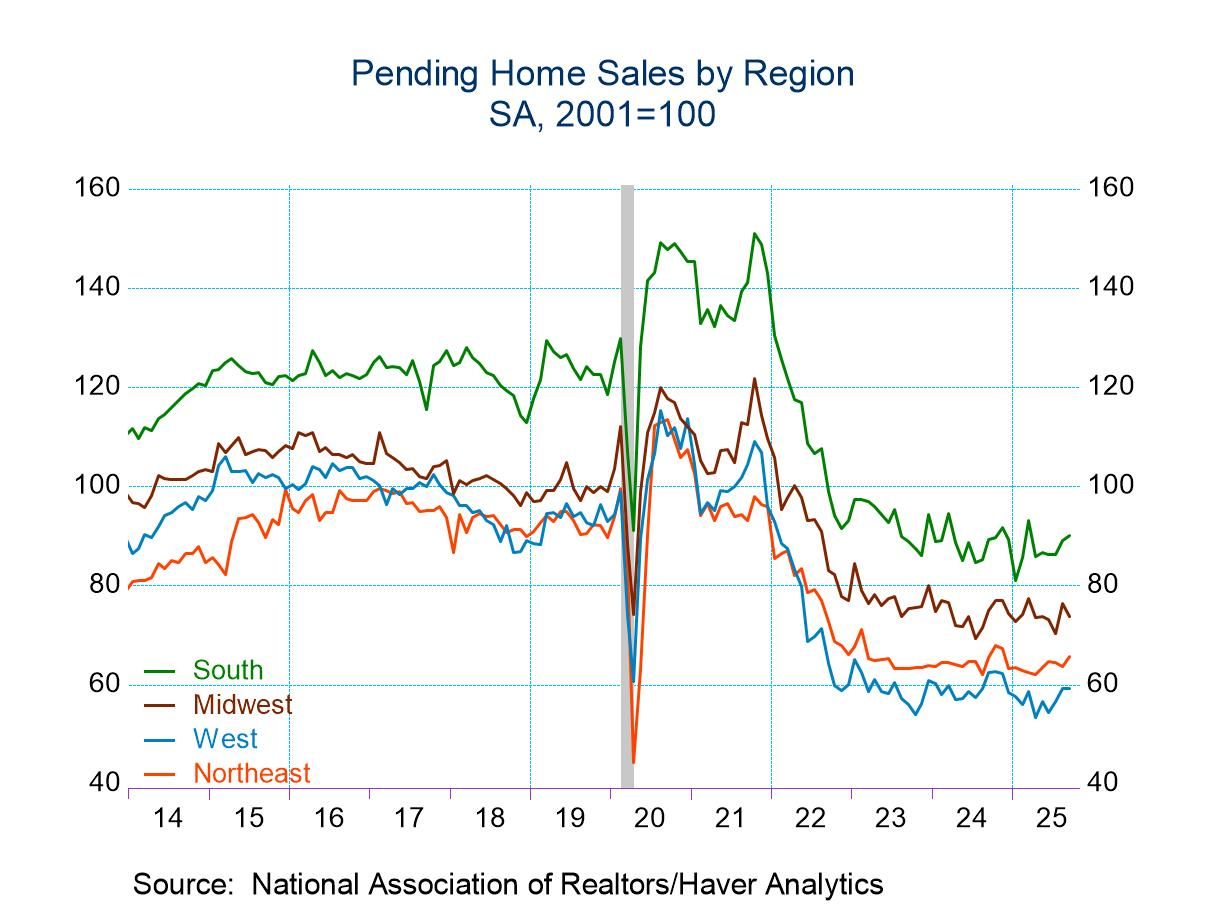 Global| Jun 16 2021
Global| Jun 16 2021U.S. Housing Starts Rise in May
by:Tom Moeller
|in:Economy in Brief
Summary
• Increase is smaller-than-expected. • Single-family and multi-family starts improve modestly. • Building permits decline. Housing starts increased 3.6% (50.3% y/y) during May to 1.572 million units (SAAR) from 1.517 million in April, [...]
• Increase is smaller-than-expected.
• Single-family and multi-family starts improve modestly.
• Building permits decline.
Housing starts increased 3.6% (50.3% y/y) during May to 1.572 million units (SAAR) from 1.517 million in April, revised from 1.569 million. The Action Economics Forecast Survey expected May starts of 1.623 million. March housing starts were revised to 1.725 million from 1.733 million.
Starts of single-family homes rose 4.2% (49.8% y/y) in May to 1.098 million from 1.054 million in April, revised from 1.087 million. Starts in March were unrevised at 1.255 million. Starts of multi-family units improved 2.4% last month (51.4% y/y) to 474,000 from 463,000 in April, revised from 482,000.
Building permits declined 3.0% (+34.9% y/y) last month to 1.681 million from 1.733 million in April, revised from 1.760 million. Permits in March fell 1.3% to 1.733 million, revised from 1.755 million. Permits to build single-family homes declined 1.6% (+50.1% y/y) to 1.130 million, down for the second straight month. Permits to build multi-family homes weakened 5.8% (+11.8% y/y) to 551,000, the lowest level since December.
By region, housing starts in the Northeast fell 22.4% (+68.6% y/y to 118,000 after declining 7.9% in April. In the Midwest, starts increased 29.9% (66.0% y/y) to 239,000 after falling 36.1% in April. Housing starts in the South improved 3.8% (59.6% y/y) to 814,000 following a 12.0% decline in April. In the West, starts edged 1.0% higher (24.5% y/y) to 401,000 after improving 4.2% during April.
The housing starts and permits figures can be found in Haver's USECON database. The expectations figure is contained in the AS1REPNA database.
| Housing Starts (000s, SAAR) | May | Apr | Mar | May Y/Y % | 2020 | 2019 | 2018 |
|---|---|---|---|---|---|---|---|
| Total | 1,572 | 1,517 | 1,725 | 50.3 | 1,397 | 1,292 | 1,247 |
| Single-Family | 1,098 | 1,054 | 1,255 | 49.8 | 1,004 | 889 | 871 |
| Multi-Family | 474 | 463 | 470 | 51.4 | 393 | 403 | 376 |
| Starts By Region | |||||||
| Northeast | 118 | 152 | 165 | 68.6 | 113 | 115 | 111 |
| Midwest | 239 | 184 | 288 | 66.0 | 193 | 169 | 170 |
| South | 814 | 784 | 891 | 59.6 | 743 | 687 | 630 |
| West | 401 | 397 | 381 | 24.5 | 347 | 321 | 336 |
| Building Permits | 1,681 | 1,733 | 1,755 | 34.9 | 1,479 | 1,385 | 1,329 |
Tom Moeller
AuthorMore in Author Profile »Prior to joining Haver Analytics in 2000, Mr. Moeller worked as the Economist at Chancellor Capital Management from 1985 to 1999. There, he developed comprehensive economic forecasts and interpreted economic data for equity and fixed income portfolio managers. Also at Chancellor, Mr. Moeller worked as an equity analyst and was responsible for researching and rating companies in the economically sensitive automobile and housing industries for investment in Chancellor’s equity portfolio. Prior to joining Chancellor, Mr. Moeller was an Economist at Citibank from 1979 to 1984. He also analyzed pricing behavior in the metals industry for the Council on Wage and Price Stability in Washington, D.C. In 1999, Mr. Moeller received the award for most accurate forecast from the Forecasters' Club of New York. From 1990 to 1992 he was President of the New York Association for Business Economists. Mr. Moeller earned an M.B.A. in Finance from Fordham University, where he graduated in 1987. He holds a Bachelor of Arts in Economics from George Washington University.










